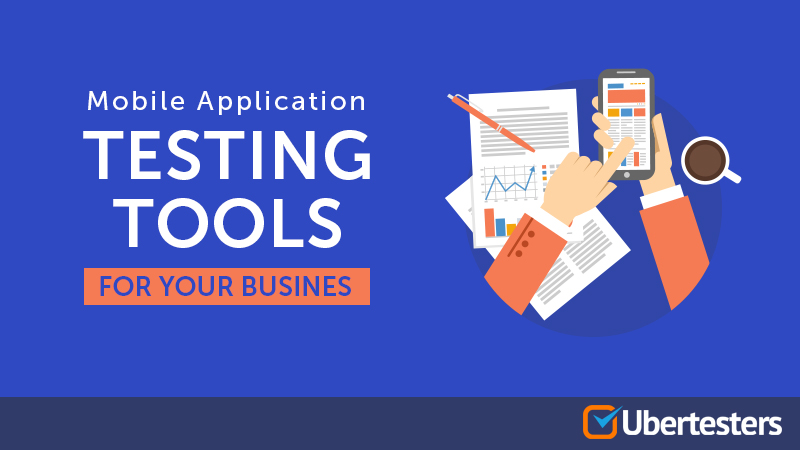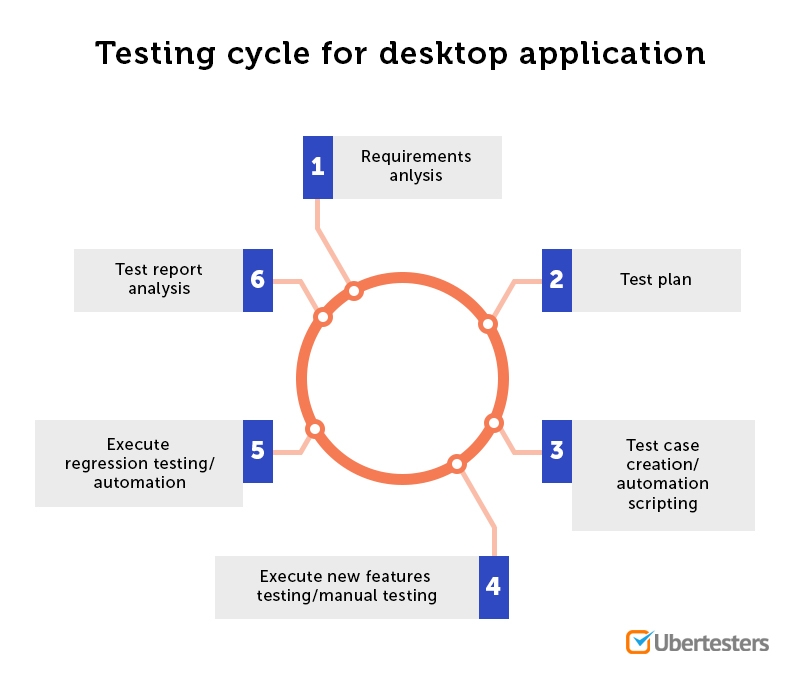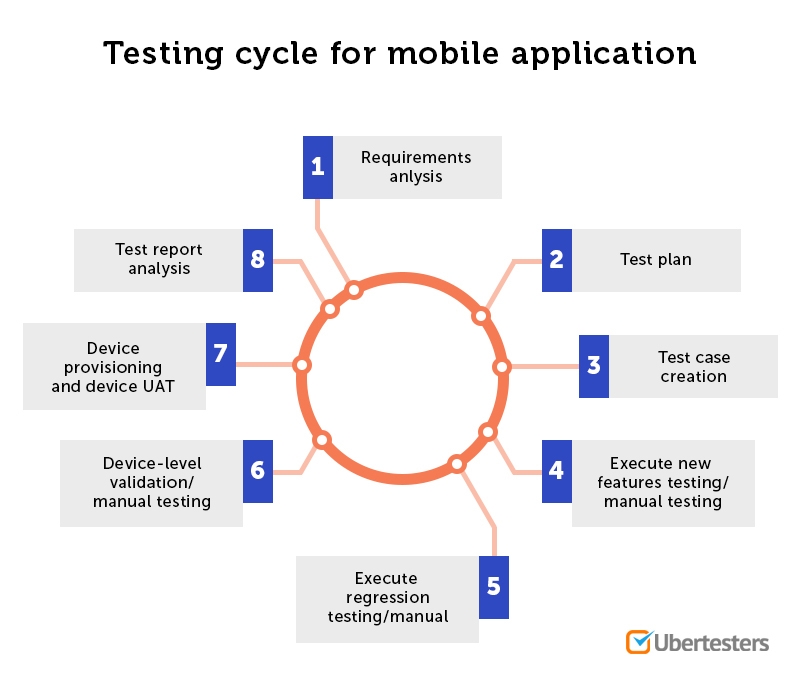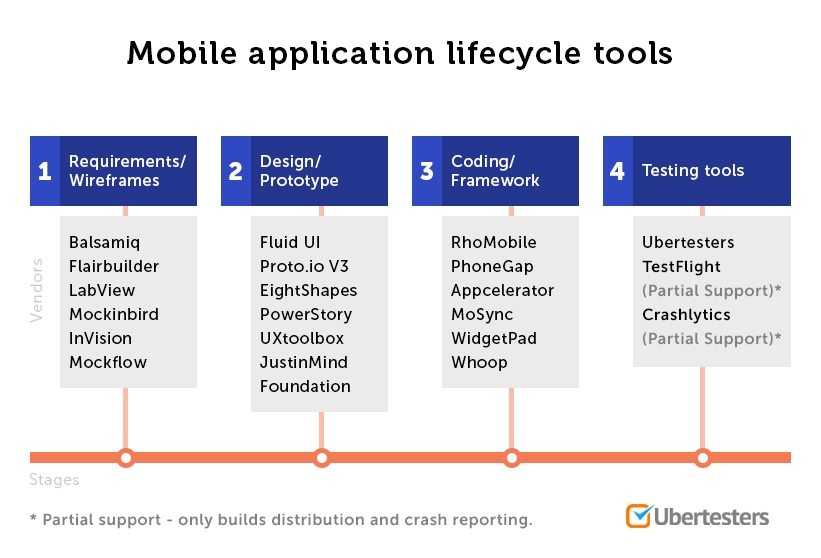7 Criteria for Selecting Mobile Application Testing Tools

So the time has come when you need to select a software testing tool for your business. There are a few ways to go about it, but we both know that you want to be walking down that yellow brick road to success. Shopping around for a mobile app testing software can be similar to preparing a stadium before a big game. You want it to be done efficiently and you want it to be done well. You have to cover the entire playing field to make sure there are no weeds. Therefore, it’s pretty much your job to go the whole nine yards. You want to give the audience a good experience. But the catch is, you’ve got to put in the time and the effort — there’s no automated shortcut. You should treat your mobile phone application testing software the same way. Put it in the hands of the proper software testing tools. Let me just start off by saying that you want real people performing mobile testing on real devices here — after all, you want to catch all the grit before your customers do. Automated tools simply do not have the same level of context awareness. An emulated device may not provide you with the complete accuracy compared to mobile testing on real devices. Automated testing tools simply don’t recognise faults that only real devices can clearly catch. The trick to getting the best app testing software is to use real people who are using your app on real devices — only then can you get an honest and straightforward result. There are many types of software mobile application testing tools to manage the testing process, but you should ensure that you are accounting for a handful of things. Below is a set of criteria to help you make the right choice.
7 Criteria for Selecting Mobile Application Testing Tools For Your Business
1) Choosing Supported Platforms
Selecting a tool that supports your target operating systems, their different versions, and its hardware configurations is a must. It’s important to understand how an application’s code base will perform across multiple operating systems and interfaces. Don’t choose a tool that supports only one platform such as iOS. For example, even though the major players on the mobile market are Google and Apple, developers still need to test for other phone users as well. If not, they are just limiting their potential customers to the specific platform users. 
2) Source Code Requirements and Build Security
You should consider securing your build distribution and make sure that it can’t be shared to with people that have no rights for it. The security of your build is important and you should never just send a link by email. You must pay attention to several things. We do not recommend sharing your build with testers who are no longer on your team. Beta testing your application can get quite tricky so it’s wise to check that everyone is working on the right build during the designated timeframes. At Ubertesters, we’ve kept this all in mind when it comes to your build distribution. You can rest assured that your build will be delivered immediately after being shared with your chosen testers. A notification is sent to each tester about updates and you are able to manage your team with just a few clicks. Most importantly, once you choose it, the build access will be closed and testers will not be able to have access to it any longer.
3) Application Refactoring Requirements
Automated tools are not recommended, especially here. At one point you must modify and refactor your application to make it testable. Make sure that a testing professional verifies all changes before and after refactoring the application. The automation process is not recommended and real testing must be done with diligence and care. Your chosen tool should meet your requirements to perform and deliver the expected results.
4) Result and Error Logging
Your tool should have the necessary filters to mine log messages by their type, text, priority, time and other important areas. Your tool should track the reported bugs and crashes so that the developers can reproduce the issue and fix it. For testing managers, it would be enough to just know if the particular test has passed or failed. Tools that allow you to review log summaries of each test across the timelines are good to keep in mind. You may even want to consider tools that have the ability to configure report formats based on those summaries. Another great thing at Ubertesters is that we have a screenshot editing tool which allows you to highlight important issues with colorsת shapes, and text. This is beneficial when wanting to bring attention to user interface issues. You are easily able to capture a screenshot and edit it in real-time, and within the tested app, during the bug submission process. Along with editing, there is also a video recording feature available. With Ubertester's video recording tool, you can record your app’s behaviour and the steps the tester did during the entire testing session. You are able to go back and see what pages were visited and what buttons were pressed during the testing period. This tool is there to help you when the screenshot is not sufficient enough to understand the cause of problems. With this, all testers’ activity can be visualised in the Ubertester’s Project Overview dashboard.
5) Continuous Testing
Your tool should always test new code changes and giving you feedback. Continuous testing is critical in recognising how new code changes has impacted the existing system. It’s about timing as well — your feedback needs to be quick. A strong testing tool should have the ability to support the testing framework, revision control, test configuration management, issue tracking, report generation and more. If you do not perform this type of testing, many defects will begin to creep in as well with the layers of new code that has attached itself onto of it. It’s best to catch those bugs early, don’t you think? This approach gives developers a room for experiments. Continuous testing and an integration with the existing quality assurance tools and technologies are important for the efficiency of the QA processes.
6) Ability to Integrate Popular 3rd party Bug-Tracking Systems
Your testing management tool should support all popular solutions such as Redmine, Mantis, YouTrack and Jira. The way you decide to handle tracking and reporting bugs will have a great impact on the outcome of your app’s release. A good bug-tracking system, which may also be known as an Issue Tracking System (ITS), should easily fit into your process and track your progress as you work instead of just checking before and after. An ideal mobile testing tool will allow you to export all found issues onto your preferred bug-tracking-system so that your developers and other team members may continue handling the bug life cycle with a familiar tool.
7) Team Management
You must know your team inside and out. Keep track of their responsibilities, what is expected from them, and the actual results of their work. How organized is your team? What are your team members' roles for each given period? What results are they providing from their work? How many defects have been found? With Ubertester’s management tool, you are able to track your team in real-time as part of your testing project. The sessions are a live-feed of all necessary information about the tester such as the device type, its operating system, its build number, the length of the test and actual results. In addition to this, each feed will show you the sequence of actions performed by the user while navigating through the tested app. With this tool, you can reproduce bugs when the tester forgets to input something into the report. There you have it — valuable set of criteria to help you select your testing tool. In addition to these points, there are also quite a few challenges for mobile testing to be aware about. For your benefit, it’s important to address them and to be knowledgeable of its limitations, capabilities and supporting features of each sector. 
Here are some main challenges to keep in mind:
1) Mobile connectivity
Challenge: Connectivity affects the application’s reliability, performance, security and functioning. The available connection solely depends on the mobile network.
2) Resource constraints
Challenge: Mobile devices offer very little resources which include memory, battery, the central processing unit, RAM, and other modules. If these resources are exhausted, the mobile application may not function properly.
3) Autonomy
Challenge: The mobile device is limited to its battery capacity. Some applications and settings use more energy than others. Consumption and duration are the main components here. You need to have a mobile that monitors and supports battery consumption and battery duration. This can be done through load testing.
4) Context Awareness
Challenge: Mobile apps that have context awareness adapt to the data they receive from the environment. For example, GPS programs, neighbour devices, the altitude, the brightness, and temperature all rely on obtained data. These properties must be functionally tested and the test should simulate its capable abilities.
5) Diversity of mobile devices
Challenge: Make sure you choose the supported platforms. You should consider the vendor and model, the operating system (and different versions of it), and the screen dimensions. You should keep your eye out for testing that can simulate data input from the context in real-time, simulation of specific devices, a test that can support mobile device platforms with different versions, and support for changing screen sizes. 
6) User experience
Challenge: This cannot be directly tested due to subjectivity. To combat this issue, testers can confirm the adequacy of particular segments and compliances of the app. This also includes the graphical interface, navigation between screens, the layout, notifications, font, and text.
7) Touchscreens
Challenge: If the touch screen fails, it all fails. Touch screens are critical because it’s the main facet of communication and interaction with the user. The usability testing must include responsiveness, gestures, and multi-touch. It must be able to support the measuring of the screen’s responsiveness, gesture recognition, and multi-touch recognition.
8) Geography and carriers
Challenge: The same app can perform differently when used in different geographies or with different carriers. One must test the app behavior in the most popular target geographies they operate and within these countries - to test with different carriers to make sure there are no issues. In light of these challenges, there are experienced testers and software tools out there to help put your app on that golden lane. Don’t know where to start? Go ahead and check out Ubertesters who will test your app in over 100 countries on real devices and bring you back the high rating you deserve.

